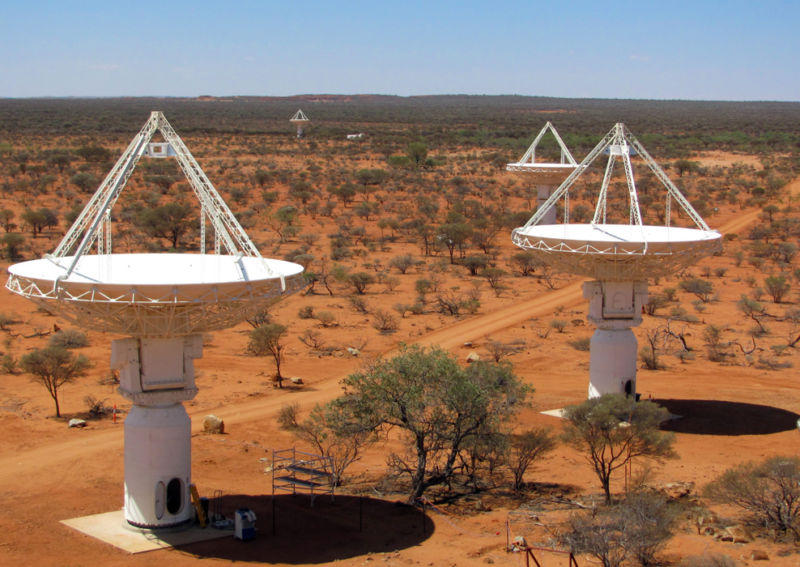We’ve seen more fast radio bursts, but we still don’t know what they are
Ars Technica » Scientific Method 2018-10-11

Enlarge / CSIRO's ASKAP antennas at the Murchison Radio-astronomy Observatory in Western Australia, 2010. (credit: Ant Schinckel, CSIRO)
Some of science's biggest mysteries are in outer space. The identity of dark matter and dark energy involve fundamental questions about how the Universe is constructed. If you instead are interested in mysteries about what the Universe is doing, then fast radio bursts may be at the top of the enigma list.
They are, as their name suggests, fast, lasting for only a handful of milliseconds. And they also involve huge quantities of energy at radio wavelengths, just as promised. But beyond that, we know almost nothing about them, and we have only observed about 35 of them as of last count. Their rarity and transient nature have helped keep them from being better understood.
But this week's edition of Nature includes a collection of 20 new observations, all occurring since the start of 2017. Unfortunately, the new bursts don't tell us much about how they're generated. And, to make matters worse, they suggest that our best bet for figuring it out—the only repeating burst source we know about—is probably unlike all the other sources we're seeing.